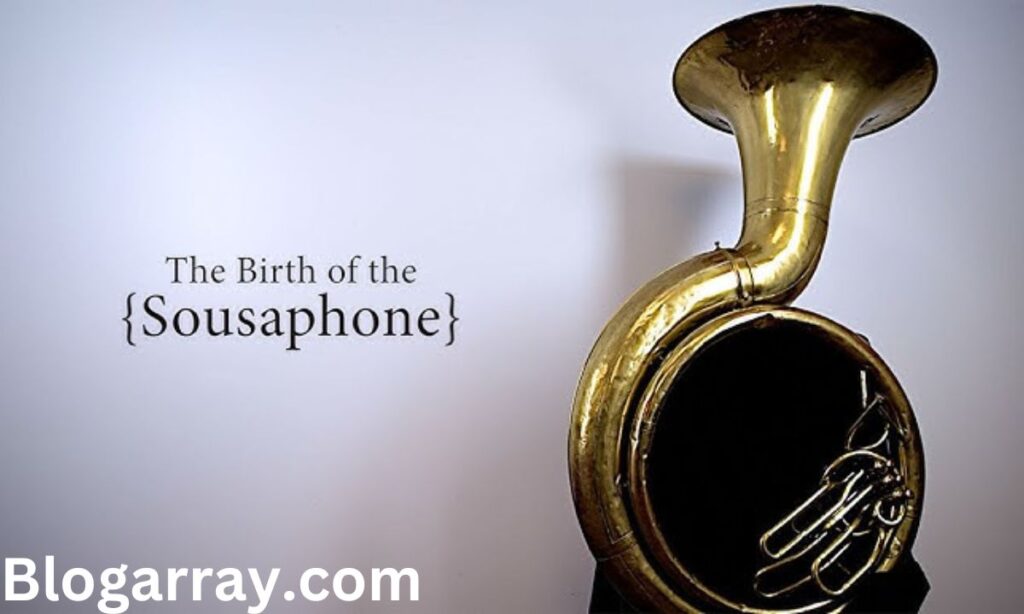The History and Evolution of the Sousaphone
The sousaphone, a member of the brass instrument family, holds a special place in the world of marching bands. Its distinctive shape and deep, resonant sound make it an essential component of any ensemble. This article delves into the history, design, and cultural impact of the sousaphone, exploring how it has evolved over the years and continues to play a pivotal role in music today.
Introduction to the Sousaphone
The sousaphone is a distinctive brass instrument that embodies the spirit of marching bands. Designed for portability by John Philip Sousa, this instrument features a unique circular shape that allows it to be easily carried while producing powerful, resonant sound. Perfect for parades and performances, the sousaphone is a beloved symbol of musical tradition and camaraderie.
The Origins of the Sousaphone
The sousaphone was invented in the late 19th century as a response to the need for a bass instrument that could be easily played while marching. John Philip Sousa, often referred to as the “March King,” was instrumental in its development. Dissatisfied with the helicon, a predecessor of the sousaphone, Sousa sought an instrument that would project sound forward, rather than upward, making it more suitable for outdoor performances.
The Evolution of the Sousaphone Design
Over the years, the sousaphone has undergone several design changes. The earliest sousaphones were made of brass and were quite heavy. However, with the advent of new materials and manufacturing techniques, modern sousaphones are often made from fiberglass, making them much lighter and more durable. Despite these changes, the fundamental design of the sousaphone has remained consistent, retaining its iconic circular shape and large bell.
Material and Construction
Originally, sousaphones were constructed entirely of brass, which gave them a rich, warm tone. However, the weight of these instruments made them challenging to carry during long marches. In the mid-20th century, manufacturers began experimenting with fiberglass, which significantly reduced the weight of the sousaphone without compromising its sound quality. Today, many sousaphones are made from a combination of brass and fiberglass, offering the best of both worlds in terms of sound and portability.
The Role of the Sousaphone in Marching Bands
The sousaphone plays a crucial role in marching bands, providing the deep bass sound that underpins the music. Its powerful, resonant tones are essential for creating the full, rich sound that is characteristic of a well-balanced marching band. The sousaphone is often the backbone of the band, anchoring the rhythm and adding depth to the overall sound.
Sousaphone vs. Tuba: Understanding the Differences
While the sousaphone is often compared to the tuba, there are several key differences between the two instruments. The most obvious difference is the shape: while the tuba is typically upright, the sousaphone wraps around the player’s body, with the bell facing forward. This design makes the sousaphone easier to play while marching and allows for greater projection of sound in outdoor settings. Additionally, the sousaphone is usually lighter than the tuba, making it more suitable for long performances on the move.
Notable Sousaphone Players and Performances
Throughout history, several notable musicians have brought the sousaphone to prominence. One of the most famous sousaphone players was Bill Bell, who played with the John Philip Sousa Band and later became a prominent tuba and sousaphone educator. In more recent years, the sousaphone has been featured in various genres beyond traditional marching band music, including jazz, funk, and even rock, showcasing its versatility as an instrument.
The Cultural Impact of the Sousaphone
The sousaphone has made a significant cultural impact, particularly in the United States. It is closely associated with American patriotic music and is a staple of Fourth of July parades and college football games. The instrument’s distinctive appearance and sound have made it an enduring symbol of American marching band culture.
Sousaphone in Popular Media
The sousaphone has also made appearances in popular media, further cementing its place in American culture. From cartoons to movies, the sousaphone is often used to evoke a sense of tradition and celebration. Its booming sound is instantly recognizable, adding a unique auditory element to any performance or scene.
Learning to Play the Sousaphone
For those interested in learning to play the sousaphone, it is important to understand that while the instrument may look intimidating, it is not as difficult to play as it might seem. Like all brass instruments, the sousaphone requires a strong embouchure (the way the mouth is shaped to play the instrument) and good breath control. However, with practice and dedication, most brass players can transition to the sousaphone relatively easily.
Tips for Beginners
Beginners should start by familiarizing themselves with the basic fingerings and scales on the sousaphone. It is also important to practice marching while playing, as this is a key aspect of sousaphone performance. Joining a marching band or ensemble can provide valuable experience and help new players develop their skills in a group setting.
The Maintenance and Care of the Sousaphone
Proper maintenance is essential for keeping a sousaphone in good playing condition. Regular cleaning of the mouthpiece, valves, and tubing is necessary to prevent buildup and ensure smooth operation. Additionally, players should regularly check the instrument for any dents or damage, as these can affect the sound quality.
Storing and Transporting the Sousaphone
Due to its size, special care must be taken when storing and transporting a sousaphone. It is recommended to use a sturdy case that provides ample protection from bumps and drops. When transporting the sousaphone, it should be securely fastened to prevent any movement that could cause damage.
Sousaphone in Contemporary Music
While the sousaphone is most commonly associated with marching bands, it has also found a place in contemporary music. Jazz and funk bands, in particular, have embraced the sousaphone for its deep, resonant sound. In these genres, the sousaphone often takes on a more prominent role, serving as a lead instrument rather than just providing the bass line.
Notable Bands Featuring the Sousaphone
Bands such as the Dirty Dozen Brass Band and the Rebirth Brass Band have helped bring the sousaphone into the spotlight in the jazz and funk scenes. These groups use the sousaphone to create a unique sound that blends traditional brass band music with modern influences, showcasing the instrument’s versatility.
The Future of the Sousaphone
As music continues to evolve, so too does the role of the sousaphone. Advances in technology and materials are likely to result in further innovations in sousaphone design. Making the instrument more accessible to a wider range of musicians. Additionally, as genres continue to blend and cross-pollinate, the sousaphone may find itself featured in an even broader array of musical styles.
Conclusion
The sousaphone is more than just a brass instrument; it is a cultural icon with a rich history and a vibrant future. From its origins in the late 19th century to its role in contemporary music. The sousaphone has proven itself to be a versatile and enduring instrument. Whether in a marching band, a jazz ensemble, or a funk group, the sousaphone continues to bring depth and richness to the music it accompanies. Ensuring its place in the pantheon of great musical instruments for years to come.
Read Also: In Glock We Trust Shirt: A Stylish Statement.
FAQs
What is the difference between a sousaphone and a tuba? The sousaphone is designed for marching, with a shape that wraps around the player’s body and a bell that faces forward. The tuba, on the other hand, is upright and typically used in concert settings.
Why is it called a sousaphone? The sousaphone is named after John Philip Sousa, who was instrumental in its development. He wanted a bass instrument that projected sound forward, making it more suitable for outdoor performances.
How heavy is a sousaphone? The weight of a sousaphone can vary depending on the materials used. Traditional brass sousaphones can weigh around 30 pounds, while modern fiberglass versions are lighter, often around 20 pounds.
Can the sousaphone be used in genres other than marching band music? Yes, the sousaphone is used in various genres, including jazz, funk, and rock. It has a versatile sound that can adapt to different musical styles.
How do you maintain a sousaphone? Regular cleaning of the mouthpiece, valves, and tubing is essential. It’s also important to check for dents or damage and to store the instrument in a protective case.
Is the sousaphone difficult to play? While the sousaphone may seem intimidating due to its size. It is not overly difficult to play with practice. A strong embouchure and good breath control are key to producing a good sound.












